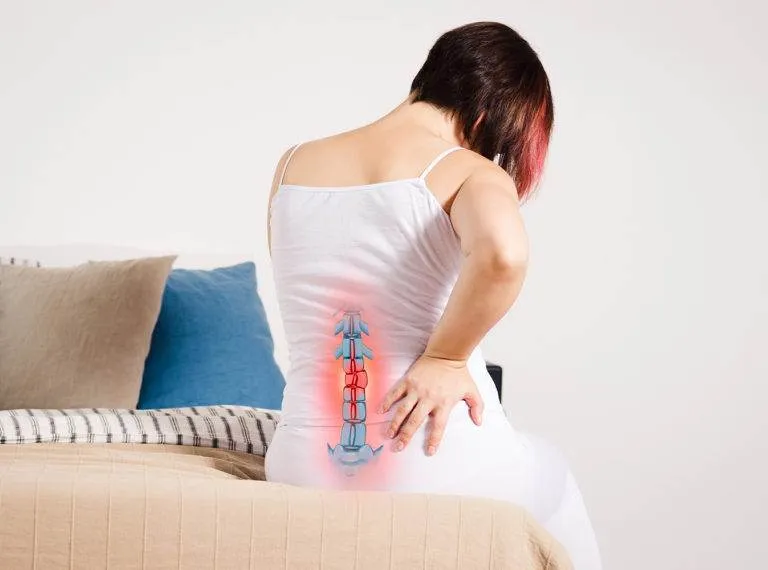How to fix Sciatica
At DC Physiotherapy in Dublin, we understand the debilitating pain that sciatica can bring. Our mission is to help our patients find effective, non-invasive solutions to manage and alleviate their discomfort. This post will look at how to fix Sciatica using Non-Surgical Spinal Decompression Therapy.
One such treatment that has shown promising results is non-surgical spinal decompression. In this blog post, we’ll explore what sciatica is, how you can manage the pain at home, treatments your GP might suggest, the causes of sciatica, how non-surgical spinal decompression works, and some research supporting this innovative therapy.
What is Sciatica?
Sciatica refers to pain that radiates along the path of the sciatic nerve, which branches from your lower back through your hips and buttocks and down each leg. Typically, sciatica affects only one side of your body. The pain can vary widely, from a mild ache to a sharp, burning sensation or excruciating discomfort. Sometimes it can feel like a jolt or electric shock. Sciatica can also cause numbness, tingling, and muscle weakness in the affected leg or foot.
How You Can fix Sciatica Yourself
While professional treatment is often necessary, there are several self-care measures you can take to ease sciatica pain:
- Stay Active: Prolonged bed rest can make symptoms worse. Gentle activities such as walking or swimming can help keep your muscles and joints flexible and strong.
- Stretching: Specific stretches can target the muscles that contribute to sciatica. Yoga poses like the pigeon pose or seated spinal twist can be particularly beneficial.
- Heat and Cold Therapy: Applying cold packs can help reduce inflammation, while heat packs can promote blood flow and relax tight muscles.
- Over-the-Counter Pain Relief: Non-prescription medications like ibuprofen or acetaminophen can help manage pain and reduce inflammation.
- Posture: Maintaining good posture when sitting or standing can reduce pressure on your spine and alleviate sciatica symptoms.
Treatments from Your GP to fix Sciatica
If self-care measures are not enough, your GP might recommend:
- Medications: Prescription pain relievers, muscle relaxants, or anti-inflammatories.
- Physical Therapy: A structured exercise program tailored to strengthen the muscles supporting your spine and improve your flexibility.
- Steroid Injections: Corticosteroid injections can reduce inflammation around the irritated nerve.
- Surgery: In severe cases, surgical intervention might be necessary to remove the portion of the herniated disc pressing on the nerve.
Causes of Sciatica
Understanding the root causes of sciatica is crucial for effective treatment. Common causes include:
- Herniated Disc: When the soft centre of a spinal disc pushes through its outer casing and presses on a nerve.
- Spinal Stenosis: A narrowing of the spinal canal that compresses the nerves.
- Piriformis Syndrome: When the piriformis muscle in the buttocks irritates the sciatic nerve.
- Spondylolisthesis: A condition where one vertebra slips over another, pinching the nerve.
- Injury: Trauma to the spine or surrounding muscles can lead to sciatica.
How Non-Surgical Spinal Decompression Works
Non-surgical spinal decompression is a therapy designed to relieve pressure on the spinal discs and nerves. Here’s how it works:
- Assessment: Your therapist will conduct a thorough assessment to determine if you are a suitable candidate for spinal decompression.
- Treatment Plan: A personalized treatment plan is developed, typically involving multiple sessions.
- Procedure: You will lie on a specialized table. The machine gently stretches your spine, creating negative pressure within the disc. This helps retract the herniated or bulging disc material, alleviating pressure on the nerve.
- Relaxation: The procedure is painless and often relaxing. Each session typically lasts between 30 to 45 minutes.
Research on Non-Surgical Spinal Decompression
Recent studies and clinical trials have shown that non-surgical spinal decompression can be effective in treating sciatica. A study published in the “Journal of Chiropractic Medicine” found that patients experienced significant pain reduction and improved function after undergoing spinal decompression therapy. Another research article in “Physical Therapy in Sport” highlighted that spinal decompression could be a beneficial adjunct to traditional physiotherapy treatments for sciatica.
At DC Physiotherapy, we are committed to staying at the forefront of non-invasive treatments for musculoskeletal pain. Non-surgical spinal decompression is just one of the many ways we strive to help our patients live pain-free lives. If you’re struggling with sciatica, reach out to us today to learn more about how we can assist you on your journey to recovery.


